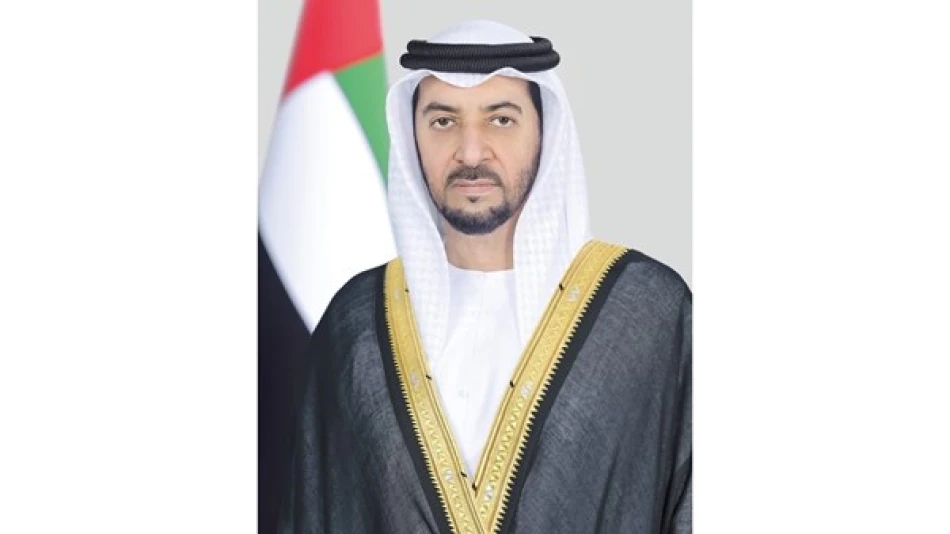
UAE's Humanitarian Foundations Strengthened under Hamdan bin Zayed's Leadership
UAE Emerges as Global Humanitarian Powerhouse, Topping International Aid Rankings
The United Arab Emirates has solidified its position as a leading humanitarian donor nation, with Sheikh Hamdan bin Zayed Al Nahyan reaffirming the country's commitment to sustainable humanitarian action on World Humanitarian Day. The Gulf state now tops global rankings for humanitarian and development aid, transforming from a regional player into an international humanitarian powerhouse that operates across 72 crisis-affected nations.
From Oil Wealth to Humanitarian Leadership
The UAE's humanitarian strategy represents a calculated soft power approach that extends far beyond traditional charity. Under President Sheikh Mohamed bin Zayed Al Nahyan's leadership, the country has systematically positioned humanitarian aid as a core pillar of its foreign policy, creating what experts recognize as one of the world's most efficient aid delivery systems.
This approach builds directly on the legacy of founding father Sheikh Zayed bin Sultan Al Nahyan, who established humanitarian principles as fundamental to Emirati identity. The current leadership has scaled this vision globally, creating institutional frameworks that can respond rapidly to international crises.
Strategic Humanitarian Operations in Crisis Zones
Gaza and Regional Priorities
Emirati humanitarian teams are currently operating in multiple crisis zones, with Gaza representing a flagship operation. The UAE's approach in Gaza demonstrates its ability to navigate complex geopolitical situations while maintaining humanitarian neutrality—a skill that enhances its regional diplomatic influence.
The country's operations extend beyond immediate relief to focus on sustainable development solutions, distinguishing UAE aid from traditional emergency response models. This long-term approach creates lasting partnerships and influence in recipient regions.
Global Reach and Impact
With over 305 million people across 72 countries requiring humanitarian assistance, according to recent international reports, the UAE has positioned itself to address this massive global need systematically. The country's aid distribution notably operates without ethnic, religious, or sectarian considerations—a approach that maximizes its diplomatic utility.
Institutional Framework: The Red Crescent Expansion
The Emirates Red Crescent Authority has recently expanded its operational scope, creating a more robust institutional foundation for the country's humanitarian ambitions. This expansion represents significant investment in humanitarian infrastructure, enabling rapid response capabilities that rival established international organizations.
The organization's partnerships with regional and international humanitarian bodies create a multiplier effect, amplifying UAE influence through collaborative networks while sharing operational costs and risks.
Economic and Diplomatic Returns on Humanitarian Investment
The UAE's humanitarian leadership generates substantial soft power dividends that support its broader economic and diplomatic objectives. By topping international aid rankings, the country enhances its global reputation and creates goodwill that facilitates trade relationships, investment opportunities, and diplomatic partnerships.
This strategy mirrors successful approaches by other middle powers like Norway and Canada, but with the advantage of substantial oil wealth enabling sustained, large-scale operations. The UAE's humanitarian brand also supports its ambitions as a regional hub for international organizations and conferences.
Addressing Global Humanitarian Funding Gaps
Sheikh Hamdan's call for increased international coordination addresses a critical challenge in global humanitarian response: the growing gap between needs and available funding. With approximately 400 million children living in conflict zones, the scale of required intervention far exceeds current international capacity.
The UAE's systematic approach to humanitarian aid—focusing on sustainable solutions rather than temporary relief—offers a model for other wealthy nations facing pressure to increase their humanitarian contributions. The country's emphasis on partnerships and coordination also addresses the fragmentation that often reduces aid effectiveness.
Future Implications for Global Humanitarian Architecture
The UAE's emergence as a top humanitarian donor signals a broader shift in global aid architecture, with Gulf states increasingly taking leadership roles traditionally held by Western nations. This trend reflects both the growing wealth of oil-rich nations and their strategic recognition of humanitarian aid's diplomatic value.
The country's support for the UN's "Act for Humanity" campaign, which focuses on protecting civilians and humanitarian workers in conflict zones, demonstrates its commitment to strengthening international humanitarian frameworks rather than simply operating independently.
As global humanitarian needs continue expanding due to climate change, conflict, and economic instability, the UAE's model of institutionalized, strategically-directed humanitarian leadership may become increasingly influential in shaping how nations approach international aid and crisis response.
 Layla Al Mansoori
Layla Al Mansoori







